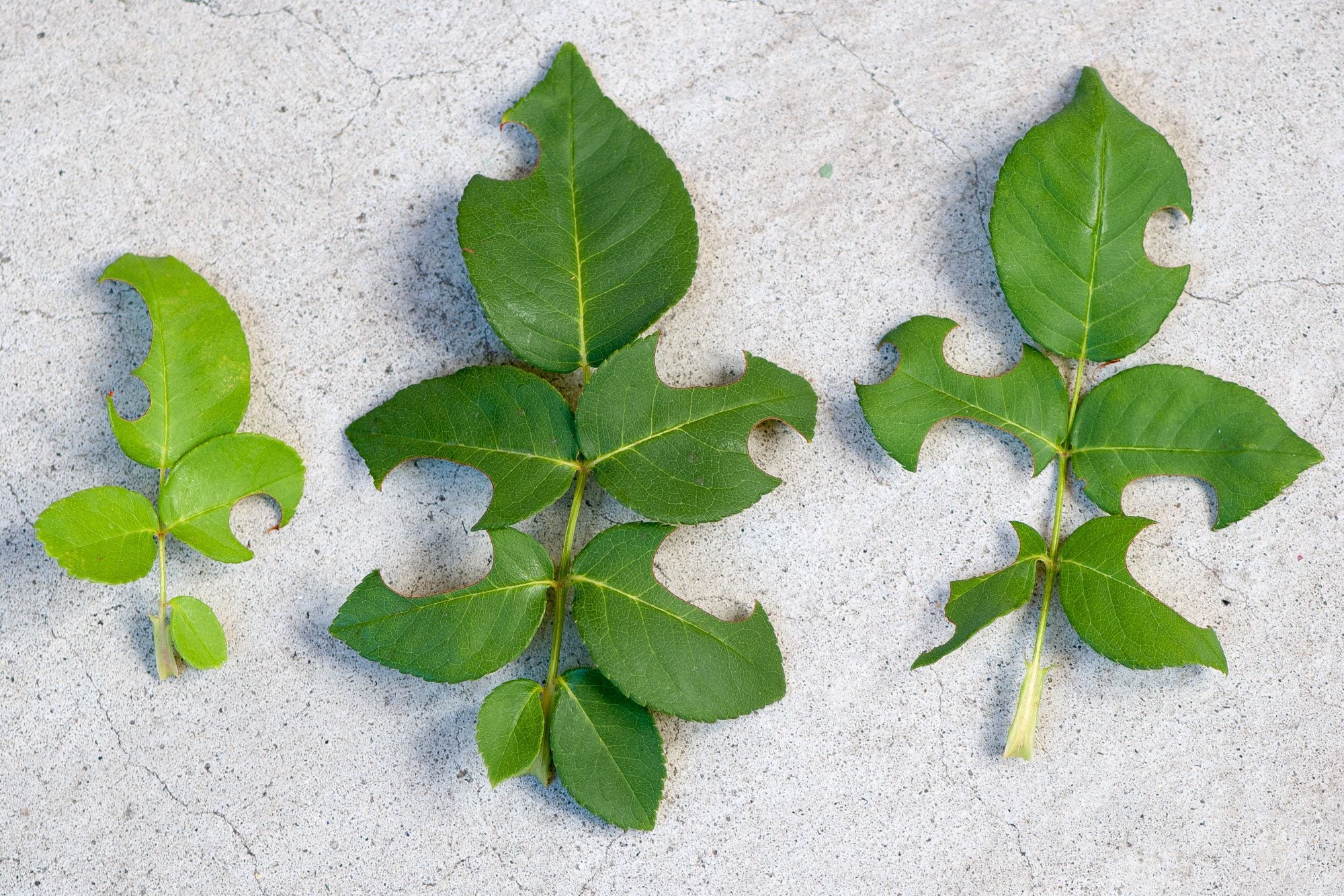Learn About Leaf Cutter Bees


Do you ever see half moon-shaped notches that appear to have been cut out of the leaves on your rosebushes or shrubs? Well, if you do, your gardens may have been visited by what is known as the leaf cutter bee (Megachile spp).
Information About Leaf Cutter Bees
The leaf cutter bees are seen as pests by some gardeners, as they can make a mess of the foliage on a favorite rosebush or shrub by making their half moon shaped precision cuts out of the leaves. See the photo with this article for an example of the cut outs they leave on the leaves of their plants of choice. They do not eat the foliage as pests such as caterpillars and grasshoppers will. The leaf cutter bees use the foliage they cut out to make nest cells for their young. The cut piece of leaf is formed into what might be called a nursery chamber where the female cutter bee lays an egg. The female cutter bee adds some nectar and pollen to each little nursery chamber. Each nest cell looks a bit like the end of a cigar. Leaf cutter bees are not social, like the honeybees or wasps (yellow jackets), thus the female cutter bees do all of the work when it comes to rearing the young. They are not an aggressive bee and do not sting unless handled, even then their sting is mild and far less painful than a honeybee sting or wasp bite.
Controlling Leaf Cutter Bees
While they may be considered a pest by some, keep in mind that these little bees are beneficial and essential pollinators. Insecticides are not usually all that effective to prevent them from making their cuts to the foliage of the rosebush or shrub they choose as they do not actually eat the material. I advise those being visited by leaf cutter bees to leave them alone due to the benefits we all reap because of their high value as pollinators. Leaf cutter bees have a large number of parasitic enemies, thus their numbers can vary greatly in any one area from year to year. The less we as gardeners do to limit their numbers, the better.
Sign up for the Gardening Know How newsletter today and receive a free copy of our e-book "How to Grow Delicious Tomatoes".

Stan V. Griep contributed to Gardening Know How for many years and has been a Colorado Native Rosarian for over four decades. He is an American Rose Society Certified Consulting Master Rosarian in the Rocky Mountain District, and a member of the Denver Rose Society, the Loveland Rose Society, and the American Rose Society. He is Gardening Know How's in-house expert on all things roses.